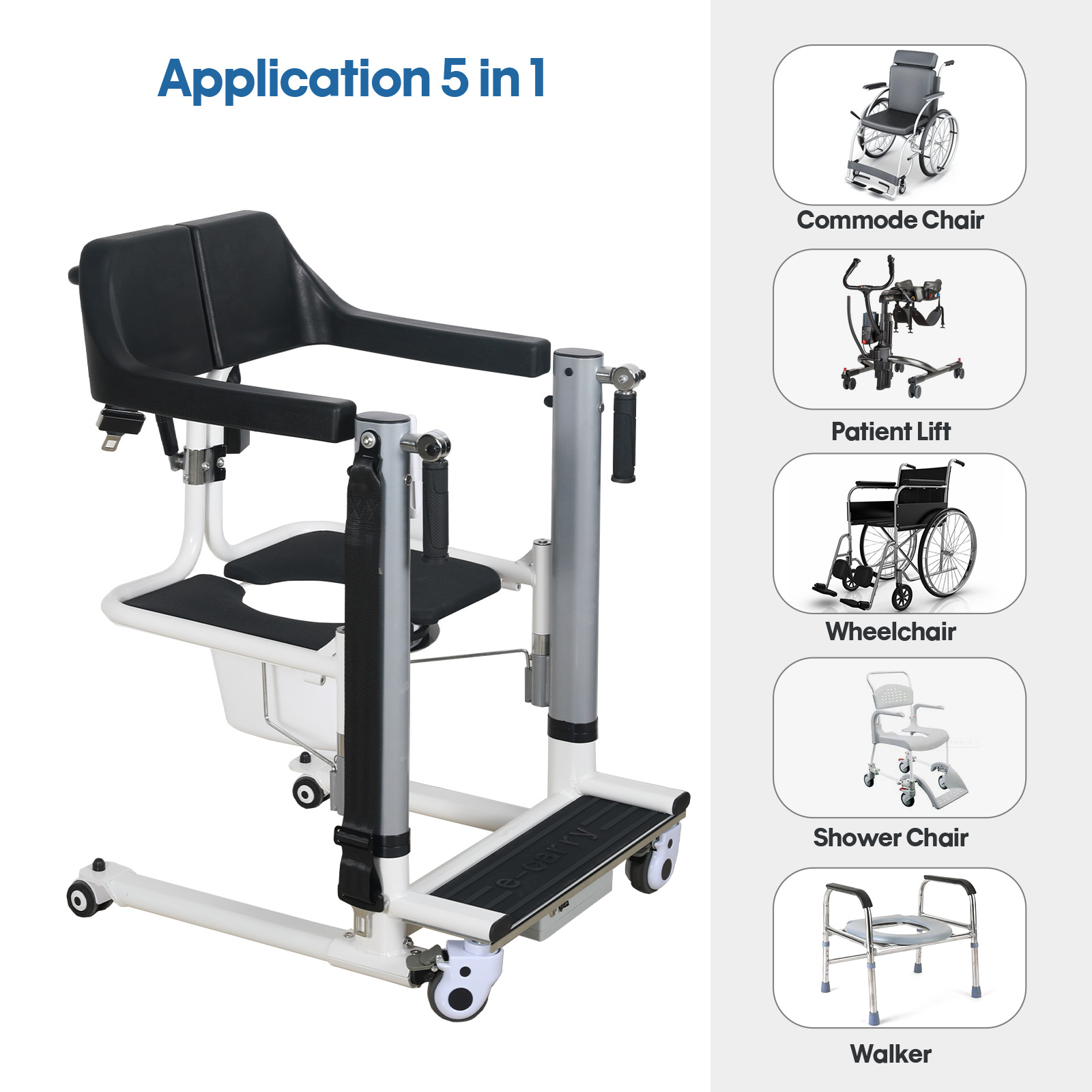Patient transfer chairs and standing hoists are two of the most commonly used mobility aids in acute and community care settings, providing patients with the necessary assistance to move around comfortably.
Both of these types of patient mobility aids have unique features that make them ideal for different situations.
In this blog post, we will compare patient transfer chairs and standing hoists and discuss their main features, patient & carer benefits, as well as the differences between both mobility aids.
Why is Patient Transfer Important?
Patient transfer is a vital component of delivering a satisfactory healthcare experience, especially for individuals who face challenges in their mobility.
This equipment is designed to help low mobility people who can’t move easily on their own.
It is crucial to select the appropriate mobility assistance device according to the patient’s requirements and the specific setting in which the transfer equipment will be utilized.
Patient Transfer Aids | Hospitals & Care Homes
In hospitals, care/nursing homes, and private residences, appropriate patient transfer equipment is crucial to ensure the safety and well-being of patients and their caregivers.
The safety and comfort of patients in hospitals and other multi-user care environments, where frequent patient movement is necessary, heavily rely on the availability of suitable equipment.
Proper patient transfer techniques and equipment can prevent falls, reduce the risk of injury to both patients and caregivers, and improve the overall quality of patient care.
Patient Transfer Aids for the Home
Even within the confines of one’s own residence, the presence of tools such as the ‘Qingxiao‘ Electric patient transfer chair can have a significant impact. These devices offer invaluable assistance by facilitating standing or transitioning between locations with minimal exertion.
Having a patient transfer aid available in all the aforementioned scenarios is beneficial, as it ensures the safety of both the patient and the caregiver, while also maintaining the dignity and independence of the individual requiring assistance.
So, having the right patient transfer equipment is like having a reliable friend always ready to lend support.
What are Patient Transfer Chairs and Standing Hoists?
Patient transfer chairs are mobility aids that help patients move from one place to another.
They are designed to be used in confined spaces such as hallways, bathrooms, and bedrooms. These chairs have wheels that allow them to be moved easily and have adjustable leg rests and armrests for maximum comfort.
Envision a situation where a person with reduced mobility necessitates assistance in transitioning from their bed to a wheelchair. The patient transfer chair simplifies this process, offering convenience for both the individual and their helper.
What is a Patient Transfer Chair?
For example, the ‘Qingxiao’ patient transfer chair is a kind of chair that has special parts to lift and move a person safely.
The inclusion of comfortable cushions and handles in its design ensures a comfortable seating experience while facilitating smooth movement. It serves as a dependable companion, ensuring individuals can change locations effortlessly and without any apprehension.
What is a Standing Hoist?
Standing hoists, on the other hand, are mobility aids that help patients who have difficulty standing up.
The purpose of these devices is to assist in transitioning patients from a seated position to a standing position. A sling is employed to encircle the patient’s waist and legs, which is subsequently lifted by the hoist.
For instance, the standing hoist as below pictured is a good example. It’s designed to give support and help someone stand safely.
You sit on a seat, and the standing helps lift you into a standing position. It’s like a friendly hand that gives you a boost when you need it.
Comparing Patient Transfer Chairs and Standing Hoists
The main difference between patient transfer chairs and standing hoists is that patient transfer chairs are designed to transfer a low mobility person into a seated position.
Standing hoists on the other hand are created to help a reduced mobility patient get up to a standing position.
One key difference lies in their size, with standing hoists being considerably larger and more cumbersome to accommodate standing patients, while patient transfer chairs are intentionally designed to be compact and small to cater to seated patients.
Unique Selling Points
- Patient transfer chairs are compact and easy to manoeuvre, making them ideal for use in small spaces.
- Standing hoists can be utilized in conjunction with a compatible riser recliner patient chair, thereby providing enhanced comfort and support to the patient.
Patient Benefits
- Patient transfer chairs facilitate a secure and pleasant method of transferring patients from one location to another, diminishing the likelihood of harm to both the patient and the caregiver.
- Standing hoists help patients who have difficulty standing up, offering them more independence and improving their quality of life.
Size and Ease of Use
- Patient transfer chairs are smaller, more compact and easier to use in confined spaces.
- Standing hoists require more space and are best suited for use in larger areas.
Carer and Healthcare Professional Benefits
- Patient transfer chairs reduce the risk of injury to carers, allowing them to move patients with ease and comfort.
- Standing hoists provide a safe and efficient way for healthcare professionals to lift patients, reducing the risk of injury to both the patient and the carer.
Post time: Nov-16-2023

